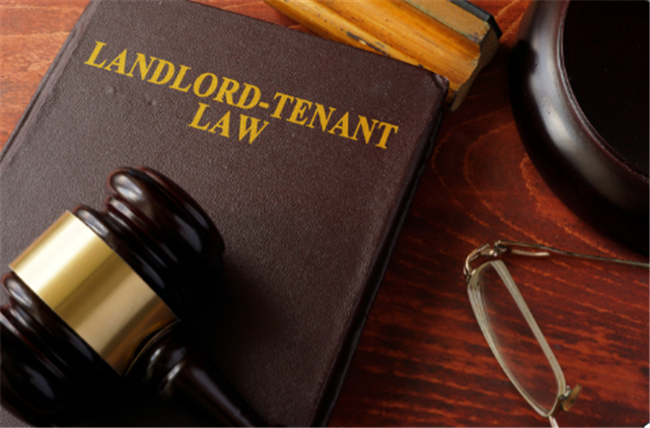Holiday season is here! As Floridians, we are no strangers to stressful traffic conditions. Those everyday conditions combined with holiday shopping and increased tourism can unfortunately lead to an uptick in auto accidents. Here is some helpful information in case you or a loved one is involved in an auto accident this season. As always, if you need us, give us a call at 407-478-4878
Important Legal Tips To Protect You After An Accident
By Brett Sahm, Esq.
 What do you think the number one tactic is that an at-fault driver’s insurance company will use against you?
What do you think the number one tactic is that an at-fault driver’s insurance company will use against you?
ANSWER: If you are injured in the accident, the other driver’s insurance company will try to make the case that you were injured before the accident.
Even if you were feeling completely fine before the accident, the insurance company will attempt to blame some portion of your injuries, pain, suffering, and medical bills on something that happened in your past.
You might be saying to yourself:
“If I didn’t feel pain, or seek medical treatment, for several months or years before this car accident, why would they claim that my injury wasn’t solely related to the car accident?”
The answer resides in Florida standard jury instruction 501.5, entitled “other contributing causes of damages.” Under 501.5, a judge instructs Florida jurors to determine which percentage of a plaintiff’s injury was due to a pre-existing condition, and which percentage of the injury was due to THIS accident (the exacerbation of a pre-existing condition and/or a brand new injury).
If an insurance company can point to anything which may have contributed to your current injury – such as, a prior car accident (even a fender bender), a prior sports injury, a prior fall of bike accident, lifting heavy weights, working a tough job with manual labor, a prior surgery – the insurance company will do everything they can to shift blame to those prior occurrences.
Why?
Because their goal is to persuade the jury to attribute a smaller percentage of the blame to this accident. If the jury only assigns 50% of the blame for the injury to this accident, the insurance company saves thousands of dollars and you lose thousands of dollars.
So, knowing that this is ALWAYS the insurance company’s main strategy, what can you do to help yourself after an accident?
Here are my main tips.
1. Watch what you tell your doctor and watch what you put on your medical intake forms.
Everything you tell your doctor is subsequently put into your medical records. Medical records can make or break a case. If you talk about prior injuries, prior pain, strenuous work, lifting heavy weights, that all goes into the medical records.
If it goes into the medical records, the insurance company will see it, and they will use it as a sword against you. Do not give them ammunition to use against you!
2. In certain instances, you will not be able to keep prior medical conditions out of the medical records.
For example, if you had prior lumbar/lower back surgery, you will need to tell that to your chiropractor or orthopedic. Also, the fact that you had surgery is obvious from the MRIs. However, be sure to tell your doctor how long you were pain free prior to this accident.
How long was life sailing along smoothly before this accident? Tell that to your doctor. Also, and this is extremely important, get the actual films from your previous MRIs and make sure to give them to your attorney. If your prior lumbar MRI shows two bulging discs and one herniated disc, and your new MRI shows five herniated discs, then you have clear evidence of exacerbation of the previous injury and also a brand new injury.
Therefore, the most important thing is to have all your MRI films so that a radiologist or orthopedic can compare what was going on before with what is going on now. If something new is going on now, then the insurance company can’t blame it on some past event(s).
3. Photographs matter!
Although someone can get seriously injured from a minor impact, perception matters to a jury. If you have a small dent in your bumper, no matter how hurt you may be, do you really think that your average juror will believe that your injuries are solely from this accident? Probably not.
So what can you do about it?
Well, first off, if there was major damage to the vehicles from this accident, make sure to get a lot of photographs of both vehicles (and your body if there is bruising, cuts, etc.). The more damage in this accident, the easier for a jury to believe that this was the accident that caused all your injuries.
Second, if you have been in prior accidents, and they were fender benders or minor, give your attorney photos of the damage from those accidents. As I said about comparing the MRI films to show an exacerbated or new injury, we can show pictures of both accidents for the proposition that this accident was markedly worse than the last one.
4. Do not offer up information to any insurance company.
Sometimes, the at-fault driver’s insurance company will want you to give a recorded statement after the accident, or they want you to sign a medical record release.
First off, get an attorney. Once you are represented, everything has to go through your attorney, and your attorney will be keen to the game the insurance company is playing. You might say to yourself: well, it’s clear that the other person is at-fault, maybe I can save money by just working with the insurance company myself instead of retaining an attorney.
The problem is: you don’t know the game, and they are masters of the game. Chances are, they will find something out about your past medical history, or they will be sneaky and find out that you played high school football, and then they won’t offer you money for your claim because they’ll say your injuries arose from your prior accidents or activities.
Don’t do this. Don’t do recorded statements. Don’t offer them any information without seeking counsel.
5. Gather all of your prior medical records
Be sure to include routine primary care physician records for the last 10 years and provide these to your attorney. Chances are that the latest records before the accident will show reduced, diminished, or non-existent pain levels.
Perhaps the visit was for something completely unrelated, and you had no pain. This is good. It shows that this accident caused the pain, and you weren’t seeing a doctor for this pain for an extended time prior to THIS accident.
Prior medical history can actually be used by your attorney to help your case.
6. Think about what you could do before THIS accident versus WHAT you could do after the accident.
Was life limited in some way? How?
Here’s an example: could you work at a certain occupation before the accident that you can’t work at now because of extended standing or sitting?
I had a client get in a serious accident after having just received a job offer which would have been a substantial increase in pay. She had to decline the job because she was not able to physically perform it. But she could have performed it before the accident. Proof of things like this can help with the current injury versus pre-existing injury argument.
7. How you present yourself matters, whether it’s online or at a deposition.
Ultimately, a jury will decide your case. Either that, or the insurance company will make an offer to settle before trial. You often are the most important factor in your case!
Are you believable? Are you likeable? Do you come across as genuine and honest? Do you dress professionally? Are you making an attempt at growth in your life? All of these things matter.
That’s why your deposition is so important. It is your opportunity to relay the truth to opposing counsel. While a prior injury will be targeted by opposing counsel in his/her questioning, you can make it clear that you were pain free before and you are impaired now. You can state all of the things you could do before the accident that you can’t do now. You can tell opposing counsel all of your friends and family who will testify regarding your condition before and after the accident.
But the most important thing is whether the opposing counsel thinks a jury will believe you. Do you come across as someone who is genuine and likeable? Or, do you come across as someone who is exaggerating her symptoms? My biggest pre-suit settlements are those where opposing counsel has taken the deposition of my client, and my client comes across as educated, hard-working, disciplined, and eloquent.
People have sympathy for those who are truly trying to improve their situation (routinely going to doctors, independently seeking knowledge of how to help themselves), but simply cannot because of the injury. Your attorney will help you prepare for the deposition.
There’s one important point that your attorney will likely tell you: if you can’t truly remember seeking prior medical treatment for any prior injuries, don’t simply offer up what you think.
Along the same lines, if you can’t specifically remember doing anything strenuous which could cause injuries, don’t simply say you “think” you did something. Remember, the opposing attorney is trying to discover a prior medical history of similar injuries, or a prior history of things you did that could have contributed to an injury (even if you didn’t specifically seek out treatment).
Do not offer up information unless you are certain about the information. Everything, and I mean everything, from your past will be used against you in an attempt to get reduced damages from a jury. So, be careful what you offer up freely.
Tags:
Business Articles,
Management News,
Members Articles






 PayProp: An established Nationwide Company for Property Management, Landlords, Property Owners in the Real Estate Sectors.
PayProp: An established Nationwide Company for Property Management, Landlords, Property Owners in the Real Estate Sectors. About our Platform:
About our Platform:  Over the past few months, we’ve spoken with countless property managers in order to learn how to better serve the needs of our users. Many expressed concerns regarding a one log-in system to track all gate activity for both guests and residents. ZUUL Systems is just that: an all-in-one control system, database, and login that’ll take care of all your gate access control needs.
Over the past few months, we’ve spoken with countless property managers in order to learn how to better serve the needs of our users. Many expressed concerns regarding a one log-in system to track all gate activity for both guests and residents. ZUUL Systems is just that: an all-in-one control system, database, and login that’ll take care of all your gate access control needs.

 On May 20 2009, just after the peak of the national foreclosure crisis, a federal statute was enacted to help protect a residential tenant who was renting a unit subject to foreclosure from being evicted without being afforded a reasonable amount of time to find alternative housing.
On May 20 2009, just after the peak of the national foreclosure crisis, a federal statute was enacted to help protect a residential tenant who was renting a unit subject to foreclosure from being evicted without being afforded a reasonable amount of time to find alternative housing.

 An area that gets a lot of foot traffic in any building, and one which everyone eventually will see and use, the restroom is a critical component of all commercial and industrial buildings. Typically thought of as only a functional space, the restroom has been transformed both by increased regulatory requirements for businesses (e.g., OSHA, ADA compliance, etc.) and by a shift to create more comfortable, inviting spaces for occupants.
An area that gets a lot of foot traffic in any building, and one which everyone eventually will see and use, the restroom is a critical component of all commercial and industrial buildings. Typically thought of as only a functional space, the restroom has been transformed both by increased regulatory requirements for businesses (e.g., OSHA, ADA compliance, etc.) and by a shift to create more comfortable, inviting spaces for occupants. An important consideration for all businesses and public spaces today, the Americans with Disabilities Act (ADA) has strict rules in place concerning the construction and renovation of restroom facilities. If you’re running an older building where the restroom facilities haven’t been recently updated, then you may need to revisit your restrooms to make sure they are up to code.
An important consideration for all businesses and public spaces today, the Americans with Disabilities Act (ADA) has strict rules in place concerning the construction and renovation of restroom facilities. If you’re running an older building where the restroom facilities haven’t been recently updated, then you may need to revisit your restrooms to make sure they are up to code.

 Florida CAM Courses is a company based in Vero Beach and serving all of Florida, that provides educational services to those in the community association profession or those that would like to enter our profession. We offer courses in whichever format you like to learn in. Whether you prefer in-person, online self-study or correspondence, you are in great hands with Florida CAM Courses. We provide practice materials at no additional charge and downloadable course materials to help you successfully pass the Florida CAM exam. We also offer a blog for updated news and current events in the CAM world.
Florida CAM Courses is a company based in Vero Beach and serving all of Florida, that provides educational services to those in the community association profession or those that would like to enter our profession. We offer courses in whichever format you like to learn in. Whether you prefer in-person, online self-study or correspondence, you are in great hands with Florida CAM Courses. We provide practice materials at no additional charge and downloadable course materials to help you successfully pass the Florida CAM exam. We also offer a blog for updated news and current events in the CAM world. What do you think the number one tactic is that an at-fault driver’s insurance company will use against you?
What do you think the number one tactic is that an at-fault driver’s insurance company will use against you?


 Not enough community association boards make effective use of committees.
Not enough community association boards make effective use of committees.
 Board meeting agendas and meeting minutes are a key part of condominium associations’ official records. For unit owners not actively involved with the association, they are the primary way to follow along with the board’s activities. Given this, it is important that the board produce quality agendas and meeting minutes. Generally, these two documents should provide sufficient detail so that a unit owner with no previous knowledge of the property will understand what the board is considering and the reasoning behind board actions. Agendas and meeting minutes are also reviewed by the association’s CPA during audits, and are some of the primary documents the Department of Business and Professional Regulation (
Board meeting agendas and meeting minutes are a key part of condominium associations’ official records. For unit owners not actively involved with the association, they are the primary way to follow along with the board’s activities. Given this, it is important that the board produce quality agendas and meeting minutes. Generally, these two documents should provide sufficient detail so that a unit owner with no previous knowledge of the property will understand what the board is considering and the reasoning behind board actions. Agendas and meeting minutes are also reviewed by the association’s CPA during audits, and are some of the primary documents the Department of Business and Professional Regulation (